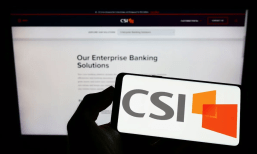Alternative Data Boosts Credit Access as New Legislation Emerges

Roughly two years ago, PYMNTS Intelligence, working in collaboration with Sezzle, found that 80 million U.S. consumers lacked reliable access to credit, which means that they’d been rejected upon applying for credit at least once in the then-recent past.
The read across has been that about 69% of the population can get credit on demand, but a significant slice of the population has been moved to the sidelines of traditional credit channels, whether for loans or credit cards.
“Because credit scores represent a borrower’s capacity to repay, these missed or late payments cost them more money and result in banks or other financial institutions further denying or restricting these consumers from accessing safer credit products. In time, a sizeable share gives up on credit as a concept,” the report noted.
Separately, data indicates that emergency expenses can be leagues above the $400 number the Federal Reserve Bank routine has used as a typical emergency expense — PYMNTS’ research has estimated the average is closer to $1,400. Unplanned expenses, on average have cost households, at the median, $650. More than a third of consumers have used credit cards to cover a recent impulse purchase.
There’s a vicious cycle when it comes to credit access. Those who are denied — often for lack of payment histories on traditional (card or personal loan or even mortgage) products — don’t get a chance to build up those histories, creating what might be likened to a treadmill of non-credit-access.
Alternative Pathways to Creditworthiness
Consumer-permissioned data can help augment the thin-to-no credit histories that prove to be headwinds to credit access.
Alternative data furnished to the national consumer reporting agencies (also known as CRAs) — Equifax, Experian and TransUnion — can build those credit profiles through repayment histories on everyday, essential expenses. The range of alternative data sources is broad, spanning everything from rent payments and utility payments.
TransUnion, by way of example, has noted: “When rent payments were included in the credit file, consumers experienced an average increase of nearly 60 points to their credit score … the consumer population who generally has the least access to favorable terms for financial goods and services, the unscorable and subprime consumer cohorts, stand to gain the most with the largest credit score growth.”
The CRA reported that with inclusion of rent payment tradelines in the credit file, approximately 9% of those credit invisible consumers went from unscorable to scorable, with an average credit score of 631 — placing them in the near prime score band. VantageScore last year announced credit-scoring model that uses both traditional credit data and alternative open banking data. The combination (available to FinTechs and to banks) gives lenders a predictive lift of up to 10% compared to the VantageScore 4.0 credit score.
New Legislation
Last week, U.S. Sen. Tim Scott, R-S.C., and chair of the Senate Banking Committee, introduced legislation targeting expand credit access for Americans with thin or no credit files.
The Credit Access and Inclusion Act would amend the Fair Credit Reporting Act and let the bureaus collect payments data for rent, phone, electricity and other recurring obligations.
In addition, the Act adds that payment plans would have certain mandates, as language in the bill indicates that “an energy utility firm may not report payment information to a consumer reporting agency with respect to an outstanding balance of a consumer as late,” if consumers are meeting deferred payment agreements or arrearage management or debt forgiveness plans.
The legislation also directs the Comptroller General of the United States to submit a report to Congress exploring the impact of the furnishing of the aforementioned data on the credit ecosystem within two years of the bill’s passage into law.



